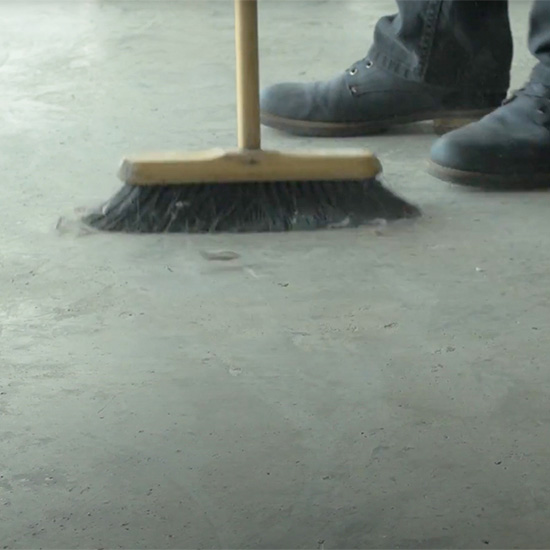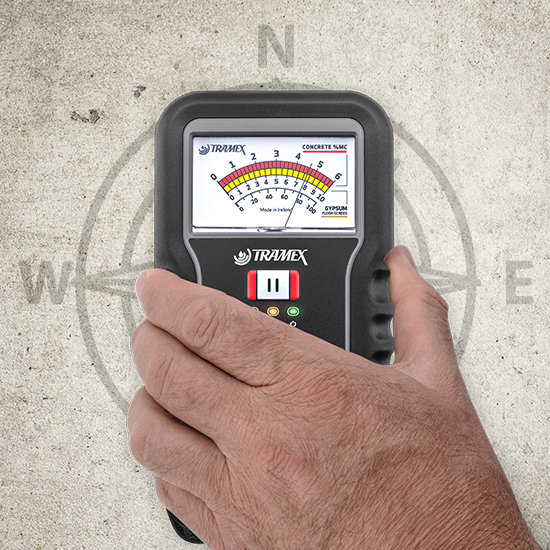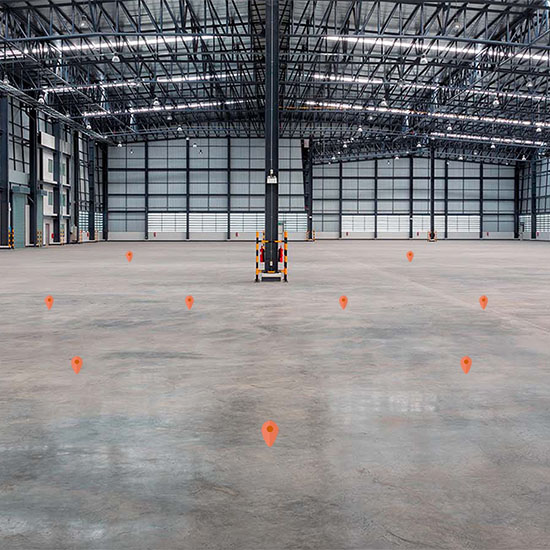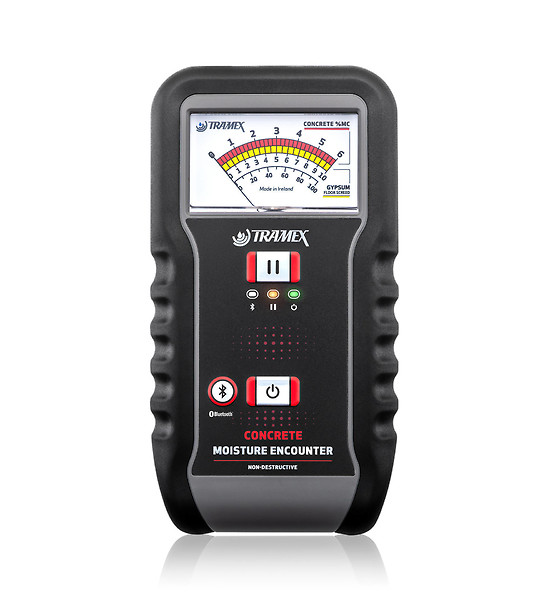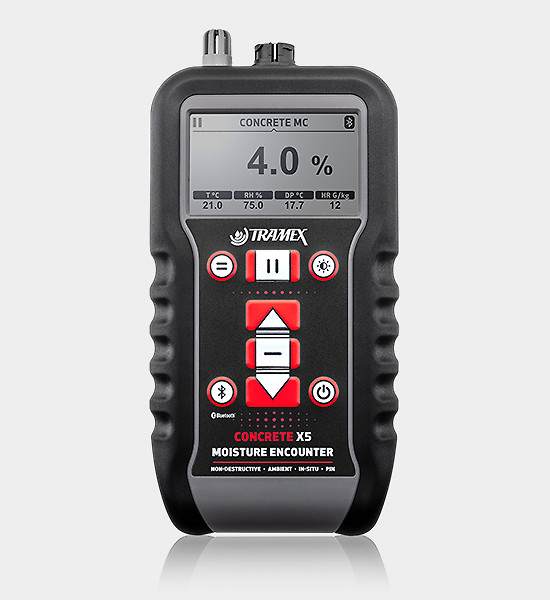Concrete Moisture Encounter CMEX5
The digital CMEX5 is a non-destructive digital concrete moisture meter. It reads into the top ¾ inch layer of the slab and provides instant, accurate, quantitative moisture content results.
The CMEX5 has the added benefits of being a relative humidity meter with its built-in hygrometer for ambient RH and temperature sensor, which is essential for determining any dew point issues at time of installation.
The CMEX5 also features a plug in port for Hygro-i2 Relative Humidity probes to carry out the ASTM F2170 test and for attaching optional wood pin probes and Relative Humidity sensors.
All measured data can be saved to the Tramex Meters App for moisture mapping, creating reports and sharing results with clients. This data can prove crucial for all parties involved to make sure that all requirements have been met.
Learn More
